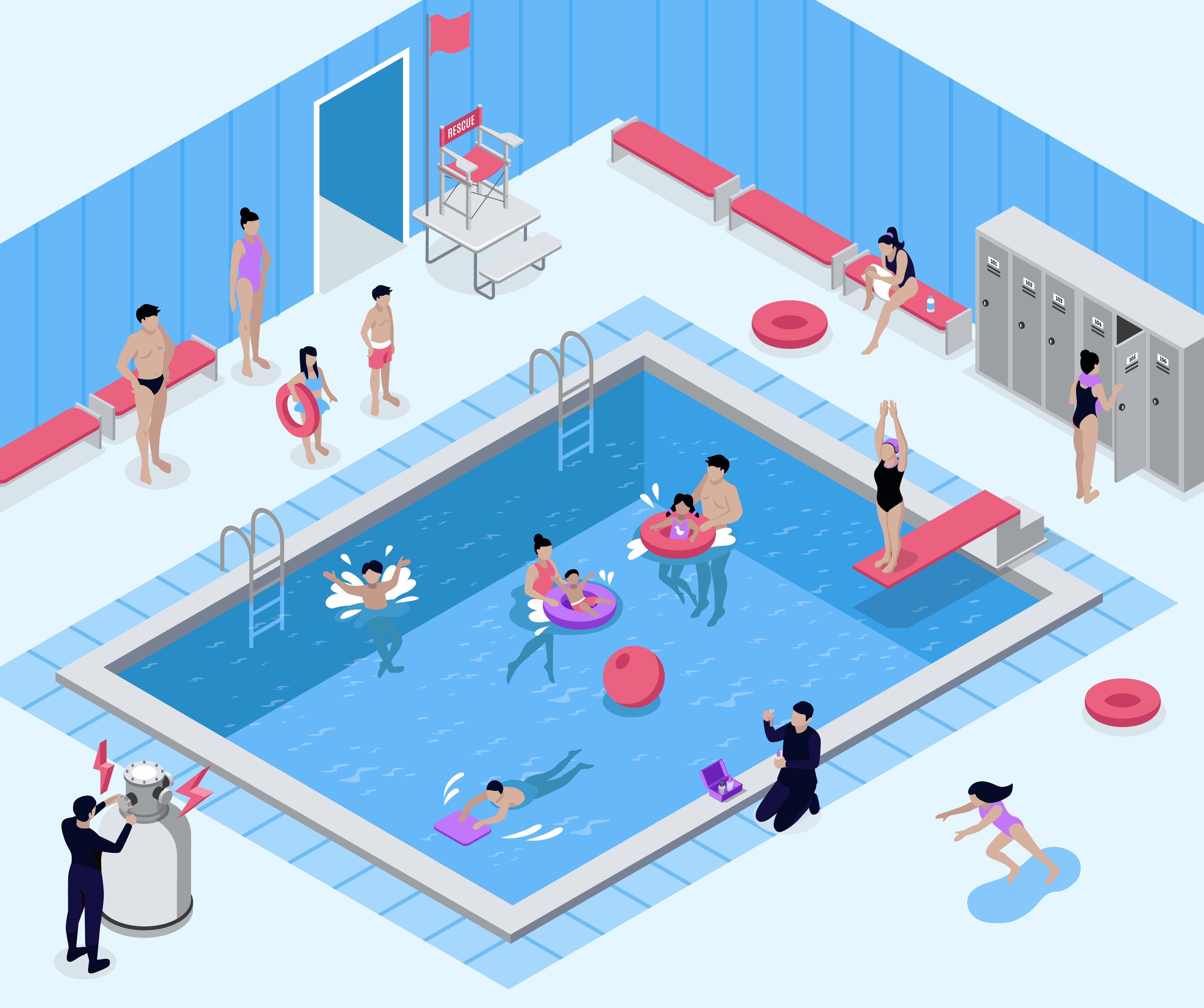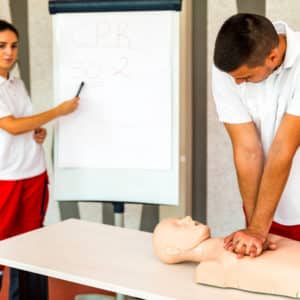Posted by: CTC Training
As a lifeguard, keeping swimmers safe is your top priority. Whether you’re working at a public or private swimming pool, it’s essential to be aware of the potential risks and hazards that could arise. Here are some common issues to watch out for:

Slipping and tripping
The area around the pool can get pretty wet and slippery, which increases the risk of slips, trips and falls. Keep an eye out for any standing water or spills and clean them up as soon as possible.
Drowning
Unfortunately, drowning is a significant risk associated with swimming pools. Be on the lookout for anyone who may be struggling in the water and act fast if you see someone in trouble.
Electrical hazards
Electrical exposure can be super dangerous and even deadly. Make sure that any cleaning equipment around the pool is installed and maintained correctly to avoid electrical hazards.
Pool chemicals
Pool chemicals, like chlorine, are necessary for keeping the water clean, but they can also be harmful if not handled properly. Always follow the proper storage, handling, and use of these chemicals to prevent accidents.
Diving boards
Diving boards are a lot of fun, but they can also be dangerous if not used correctly. Make sure everyone is using proper diving techniques and discourage any risky behaviour.
Pool ladders
Pool ladders can also be hazardous if not maintained or used properly. Check that ladders are securely installed and regularly inspected for any damage.
Keeping everyone safe around the swimming pool is essential, and as a lifeguard, it’s your responsibility to be aware of any risks or hazards that may arise. If you want to up your skills and knowledge, consider taking an Emergency Pool Responder Training Course to prepare for any emergency situations that may come up. Stay alert, stay safe, and happy swimming!
Top Swimming Pool Dangers – Full article
As a lifeguard, keeping swimmers safe is your top priority. Whether you’re working at a public or private swimming pool, it’s essential to be aware of the potential risks and hazards that could arise. Here are some common issues to watch out for:
Slipping and tripping
The area around the pool can get pretty wet and slippery, which increases the risk of slips, trips and falls. Keep an eye out for any standing water or spills and clean them up as soon as possible.
Drowning
Unfortunately, drowning is a significant risk associated with swimming pools. Be on the lookout for anyone who may be struggling in the water and act fast if you see someone in trouble.
Electrical hazards
Electrical exposure can be super dangerous and even deadly. Make sure that any cleaning equipment around the pool is installed and maintained correctly to avoid electrical hazards.
Pool chemicals
Pool chemicals, like chlorine, are necessary for keeping the water clean, but they can also be harmful if not handled properly. Always follow the proper storage, handling, and use of these chemicals to prevent accidents.
Diving boards
Diving boards are a lot of fun, but they can also be dangerous if not used correctly. Make sure everyone is using proper diving techniques and discourage any risky behaviour.
Pool ladders
Pool ladders can also be hazardous if not maintained or used properly. Check that ladders are securely installed and regularly inspected for any damage.
Keeping everyone safe around the swimming pool is essential, and as a lifeguard, it’s your responsibility to be aware of any risks or hazards that may arise. If you want to up your skills and knowledge, consider taking an Emergency Pool Responder Training Course to prepare for any emergency situations that may come up. Stay alert, stay safe, and happy swimming!

About CTC Training
CTC Training provides professional development and education courses for businesses and individual learners. They are market leaders in online learning. CTC Training's wide range of courses offer valuable qualifications in areas such as education, assessment and vocational training.


